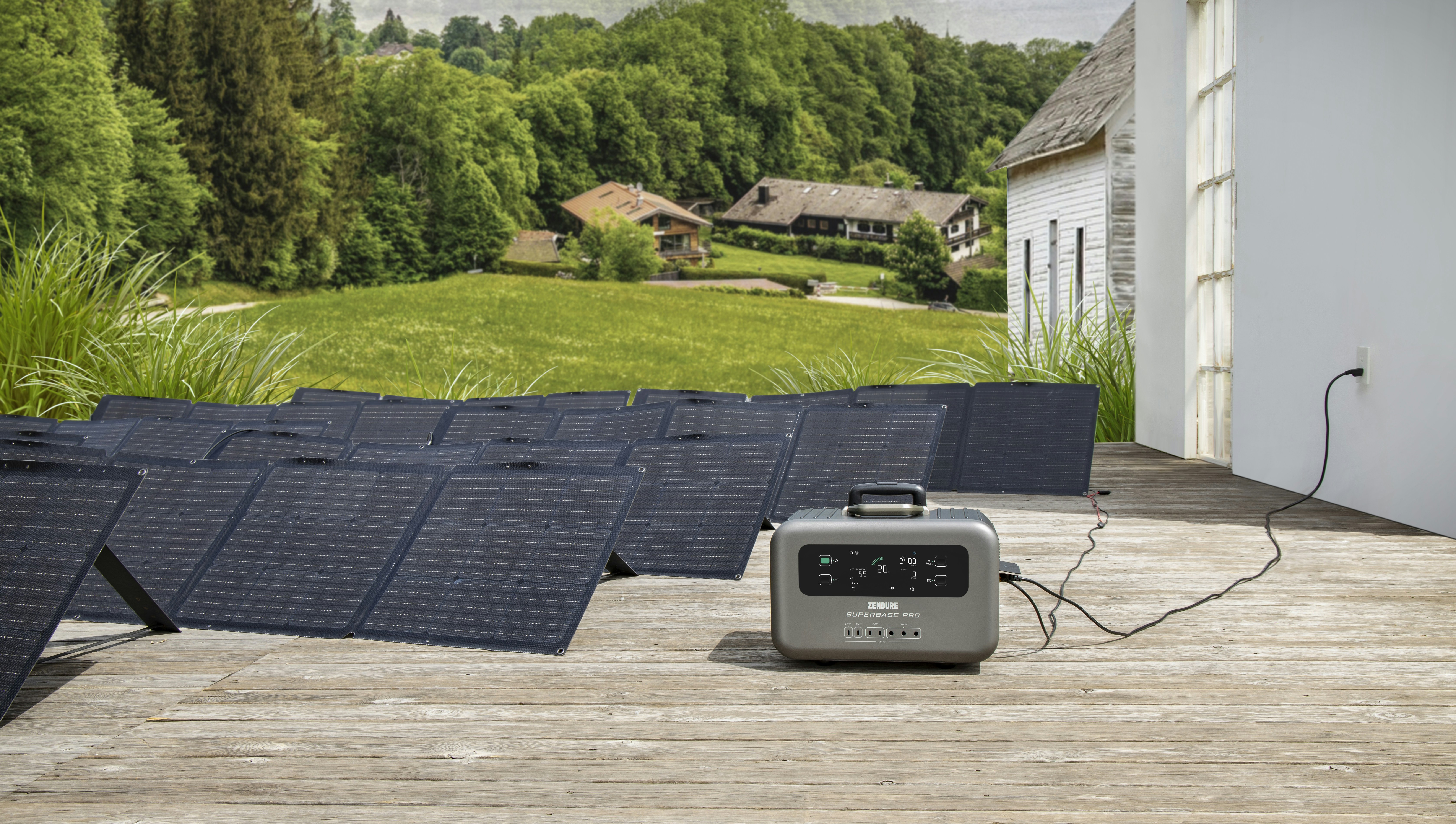
Introduction to Off-Grid Living with Solar Power
Off-grid living has become an increasingly popular lifestyle choice for individuals seeking autonomy, self-sufficiency, and a deeper connection to nature. This lifestyle often appeals to those residing in small cabins or vans, as it allows them to enjoy scenic locations without the constraints of traditional utility services. Embracing an off-grid lifestyle means finding ways to sustain your everyday needs without relying on public resources, and solar power emerges as an optimal solution for achieving this goal.
One of the primary benefits of utilizing solar power for small cabins and vans is the creation of a reliable energy source. In an off-grid setting, having a dependable power supply is crucial for running essential appliances, lighting, and charging devices. Solar energy systems harness sunlight and convert it into electricity, providing a renewable resource that can significantly enhance the quality of life while living away from conventional infrastructures. Additionally, solar power helps reduce reliance on fossil fuels, aligning with environmentally-conscious living.
For those considering the transition to off-grid living, this tutorial is designed specifically for beginners. It will guide you through the fundamentals of establishing your own solar power setup. You will learn the necessary components, such as solar panels, batteries, and charge controllers, as well as how to effectively configure and maintain them. This step-by-step guide ensures a clear understanding of each process, equipping you with the knowledge to successfully implement a working solar power system in your small cabin or van.
With the information provided, you can look forward to enjoying the newfound independence that off-grid living with solar energy brings, enhancing your experience and enabling you to fully embrace the lifestyle’s potential.
Essential Gear and Equipment for Your Solar Setup
When embarking on a DIY solar power setup, having the right gear is essential for ensuring both functionality and efficiency. This comprehensive guide will outline the key components needed for a successful solar energy system, specifically tailored for small cabins and vans. Each item can significantly affect the overall performance of your off-grid setup.
First on the list are portable solar panels. These devices are crucial, as they convert sunlight into electricity. When selecting portable solar panels, consider options with at least 100 watts of power to ensure sufficient energy production for basic appliances. Look for lightweight and foldable designs that can be easily transported and deployed in varied environments. For purchasing, check reliable platforms such as Amazon for a selection of panels that meet these specifications.
Next, battery packs are fundamental for storing excess energy generated during sunny days. Lithium-ion batteries are preferable due to their longevity and efficiency, allowing you to draw power when sunlight is insufficient. A good rule of thumb is to choose a battery pack with a capacity that exceeds your daily energy consumption by at least 20% to account for fluctuations in power generation.
A charge controller is also an indispensable component of your solar power system. It regulates the voltage and current from the solar panels to the batteries, preventing overcharging and extending battery life. While there are various types, a maximum power point tracking (MPPT) charge controller is often more efficient, extracting the maximum possible power from your solar panels.
Additionally, an inverter is necessary if you plan to use AC appliances. It converts the DC power from the solar panels and batteries into usable AC power. Choose an inverter that matches or exceeds your total wattage needs to avoid any power shortages.
Lastly, consider acquiring accessories such as battery monitoring systems, fuses, and wiring kits. These components can enhance the efficiency and safety of your system. With this gear list, beginners can confidently begin setting up their solar power systems, ensuring they make informed decisions based on specific energy needs.
Step-by-Step Tutorial for Setting Up Your Solar Power System
When embarking on your journey to establish a solar power system for small cabins or vans, following a structured approach is essential. The first step involves selecting a site that ensures optimal sunlight access. Ideally, your location should be free from obstructions such as trees or buildings that might cast shadows during peak sunlight hours. Perform a thorough assessment of your site throughout different seasons to ensure consistent sun exposure.
Once the site is finalized, the next phase is acquiring and assembling the necessary equipment. A standard solar power setup typically includes solar panels, a charge controller, batteries, and an inverter. Each component plays a crucial role in the efficiency of your system. Ensure that your solar panels are appropriately sized based on your energy needs, and choose batteries that can effectively store the required amount of energy. The charge controller acts as a safety device, preventing overcharging and monitoring voltage levels.
The wiring process is critical in connecting your solar panels to the battery. Use appropriate gauge wires to prevent energy loss and ensure security. Set up your solar panels using brackets that can withstand various weather conditions. Connect the positive terminal of the solar panel to the positive terminal of the charge controller and do the same for the negative terminals. After connecting to the battery, wire the inverter to the battery to convert the stored DC power into usable AC power for your devices.
Throughout the installation, it is advisable to consult visual aids or diagrams that illustrate each step in detail. This visual guidance can significantly enhance your understanding and clarity during the setup process. Should you encounter issues, troubleshooting tips such as checking all connections and ensuring proper grounding can help you diagnose and resolve any problems effectively. Your commitment to learning and patience during this process are vital components for a successful solar power system installation.
Maintaining Your Solar Power System and Maximizing Efficiency
Maintaining your solar power system is crucial for ensuring optimal performance and longevity. Regular upkeep allows you to harness the full potential of solar energy, especially within small cabins and vans that rely on such systems for off-grid living. One key aspect of maintenance is routine cleaning of solar panels. Dust, dirt, and debris can accumulate on the surface of the panels, reducing their energy absorption capacity. It’s advisable to clean the panels at least twice a year or more frequently in dusty environments. A mixture of mild soap and water, plus a soft cloth or sponge, can effectively remove grime without damaging the panels.
Another important component of your solar setup is the battery system. Regularly checking the health of your batteries can prevent unexpected failures. Look for signs of corrosion at the terminals and ensure that the battery levels are adequate if you’re using flooded batteries. Lithium-ion batteries require less maintenance but should still be monitored for any unusual signs, such as swelling or rapid discharge rates. Keeping your batteries charged and avoiding deep discharges are vital practices for prolonging their lifespan.
Managing energy consumption effectively plays a role in maximizing the efficiency of your solar energy system. Keep an eye on how and when energy is used; heavy appliances may require more power and could deplete your batteries faster than anticipated. As a best practice, prioritize energy-efficient appliances and consider investing in LED lighting to reduce overall consumption.
Finally, recognize the signs of system failure, such as decreased power output or unusual noises from the inverter. Promptly addressing these issues can prevent further damage and ensure your system continues to supply the necessary energy for your off-grid lifestyle. By adhering to these maintenance tips and consistently monitoring your solar power setup, you can enjoy a reliable and sustainable energy source for years to come.
